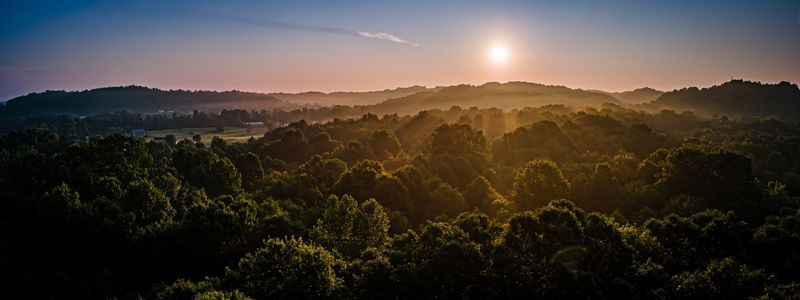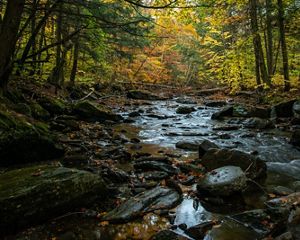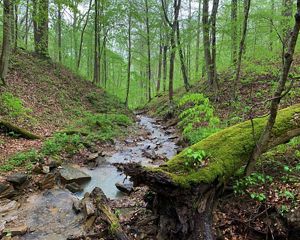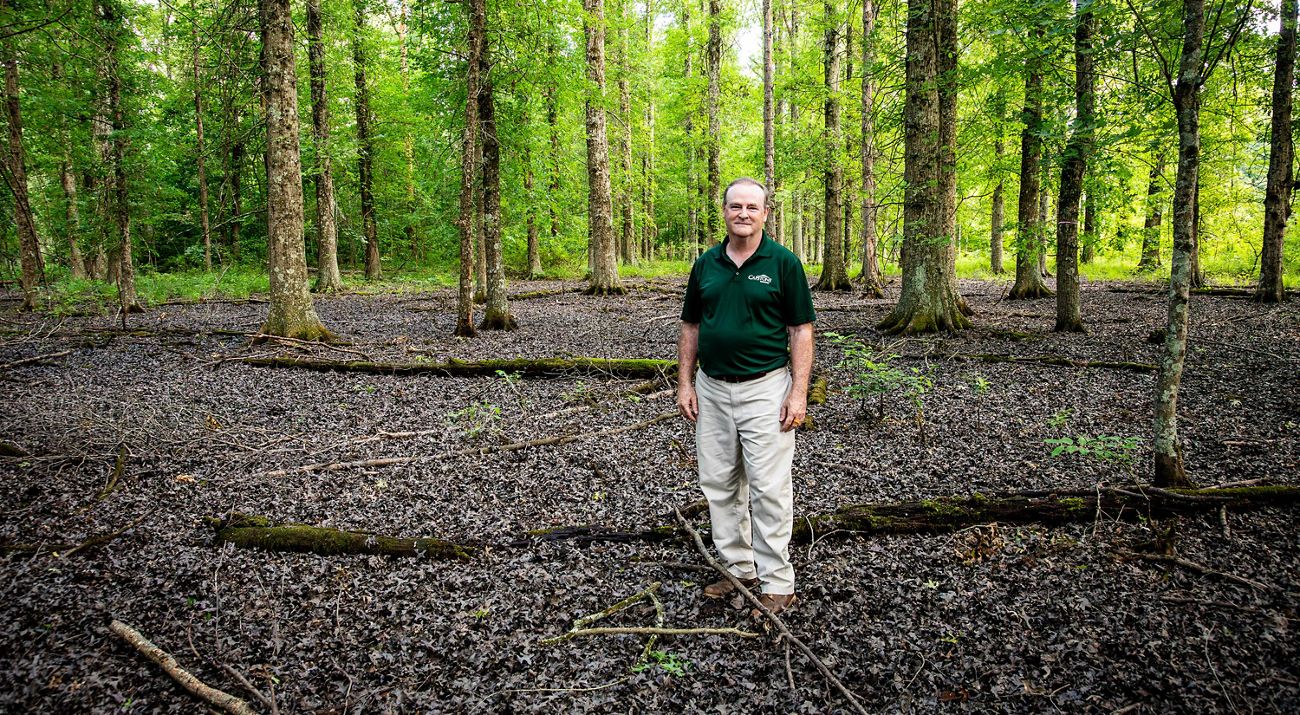
Local Landowners Play Role in the Future of Ohio’s Forests
Discover how TNC is helping to connect Ohio’s private landowners with programs that will help protect our forests for generations to come.
When David Funk started planting trees in the 1980s, his goal was simple: leave the land better than when he found it. A long history of agriculture and degradation left deep imprints across Athens County, but Funk wanted to begin a new legacy, one that would return the long-abandoned land back to oak-hickory forest and inspire the next generation of conservationists. The decades that followed saw his vision come to life, and thanks to the Family Forest Carbon Program (FFCP), those efforts will continue to live on for generations.
Empowering Landowners
In a state where 84% of forests are privately owned, and nearly half of them exist in parcels of 50 acres or less, private landowners play a critical role in the conservation of Ohio’s natural resources. The FFCP is an initiative that empowers private forest owners to enhance their land’s health, mitigate climate change and earn income simultaneously by providing access to participation in the voluntary carbon market, which was traditionally inaccessible to smaller forest owners.
Developed collaboratively by the American Forest Foundation and The Nature Conservancy (TNC), the program assists landowners in implementing sustainable forest management practices, leading to healthier woodlands, improved wildlife habitats and increased carbon sequestration. The program equips landowners with both financial and technical support, aiming to enhance the health, value and resilience of forests.
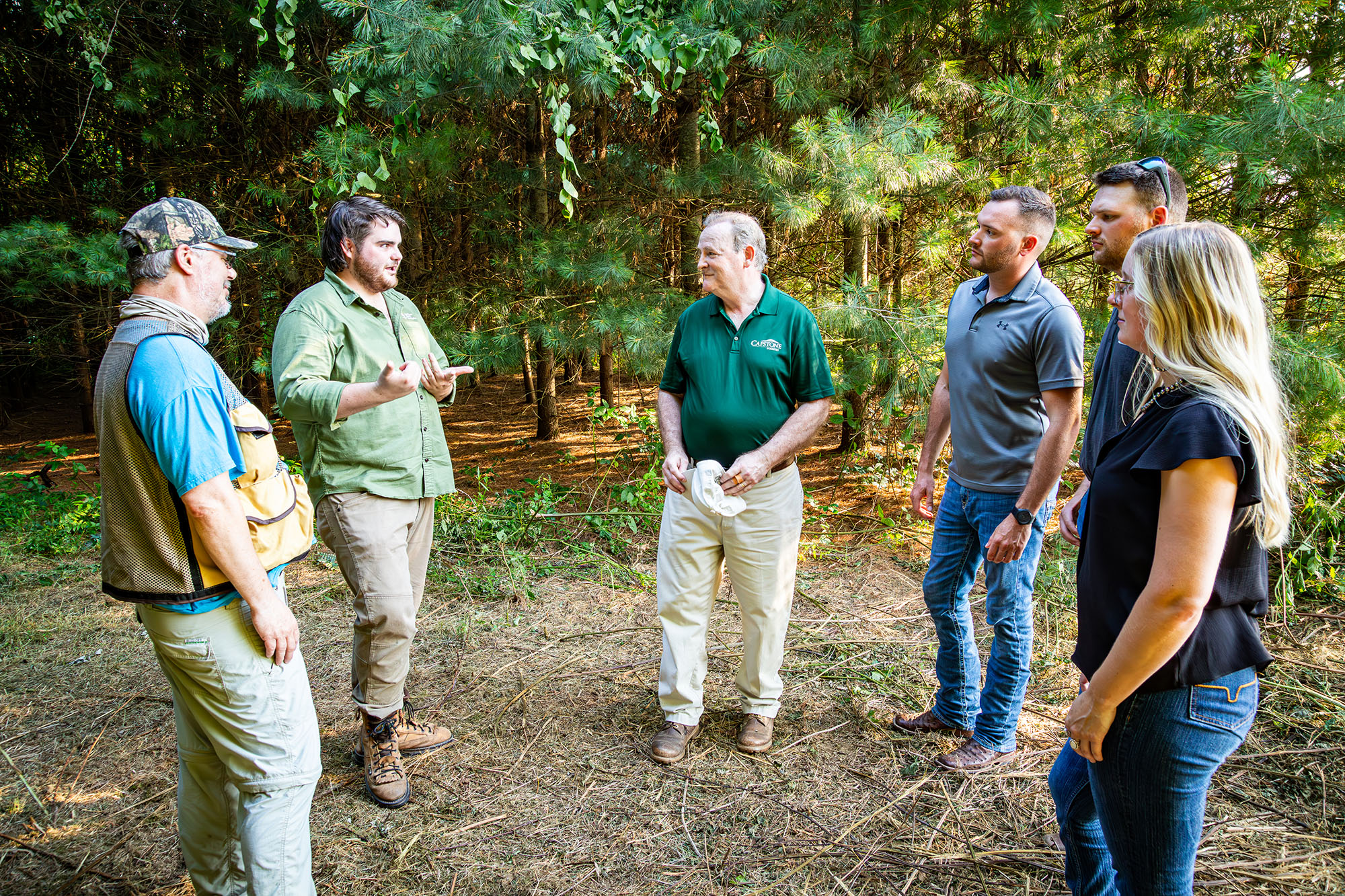
How the Program Works
Tailored Forest Management Plans: Participating landowners gain access to professional foresters who help them create customized forest management plans. These plans consider the unique characteristics of each property, ensuring sustainable practices are in place.
Annual Payments: FFCP issues annual payments to landowners who implement scientifically demonstrated forest management practices. These practices not only improve forest health but also provide additional benefits for rural communities and enhance carbon capture and storage.
Carbon Accounting: The carbon generated by enrolled landowners is meticulously measured and verified using a new forest carbon accounting methodology. Accuracy and transparency are paramount, especially in a program that bridges conservation and climate action.
“For many years, I don’t believe that people in the Appalachian region valued our woodlands for the ecological benefits they provide,” says Funk. “The FFCP plants a stamp on the value of our forests in Central Appalachia, a value that extends far beyond just wildlife habitat and recreation and includes the global importance of our forest’s ability to capture and store carbon.”
A Vision of Reforestation
When Funk acquired the first plots of what is now the Funk Family Forest, he was met with a tangle of invasive species, like multiflora rose. Years of intensive agriculture followed by a period of abandonment had taken their toll on the land. It was not dissimilar from many areas of Ohio that were timbered in the early 1900s to make way for farms. Unfortunately, as farms were later abandoned, much of this former farmland fell victim to the establishment of invasive plants, which stunted the natural process of succession by shading out the forest floor and preventing oaks and hickories from reestablishing. Forests need active management to thrive. And that’s just what Funk and his family were able to provide.
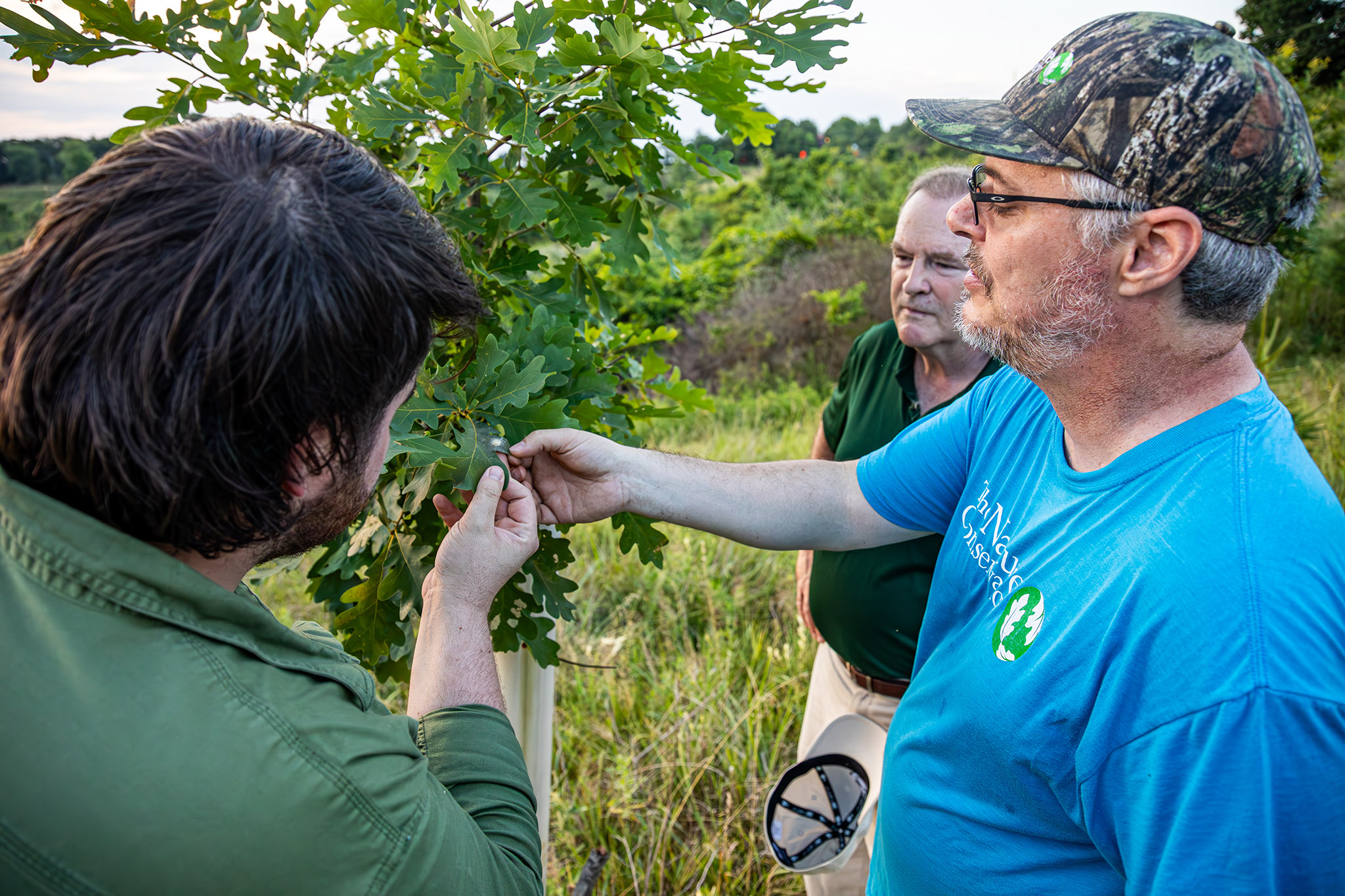
Historically, forests in Athens County were subject to high grading, a harvesting practice that took the largest, most economically valuable trees from the land without regard for the ecological impact to the forest. This left mostly beech and maple trees, which grow quickly and shade out the forest floor, suppressing the growth of traditional hardwoods like oaks and hickories.
Quote: Tom Rooney
Oaks and hickories are powerhouses of the forest. Not only are they of high economic value, but they capture and store more carbon and support more wildlife than tulip poplar and maples.
A Long-Term Vision
Funk’s connection to the land runs deep. His family’s 1800 acres of woodlands have witnessed generations of care and stewardship, and when asked about his decision to enroll in the FFCP, his eyes light up. “It is very exciting that through this program, we are bringing the next generation, and even the grandchildren, into conservation,” he shares. For Funk, this enrollment is a formal recognition that Southeastern Ohio’s woods are to be treasured.
In many ways, Funk has been a thought leader in his efforts to restore southern Ohio’s forests. After all, his vision to leave the land better than when he found it was ignited during a time when climate change was a mere whisper and when forestry was largely a passive practice. Today, Funk is proud to have been the first Ohio enrollee in the FFCP program. But his participation is more than just emblematic of a lifetime spent stewarding the land.
“Enrolling in FFCP connected us to foresters that have provided tremendous insight into the nature of our woods,” Funk says. “They are helping bring an additional layer of sophistication to our forest management plans and we’re able to use the provided stipend to enhance what we were already doing.”
Funk hopes that his story will inspire and influence other landowners to consider how they too can help bolster the ability of Ohio’s forests to support people and wildlife for generations to come.
“When we started this work in the 1980s, people really weren’t planting trees. It’s affirming to see the increasing appreciation and interest in the Appalachian region.” After forty years of reforestation efforts, Funk’s excitement is palpable. “We’re getting close to walking into our forest and seeing what might have been here 400 years ago,” he explains. “We’ve seen a return of species that were historically removed from the land, including turkey and bobcats, and we hope that one day we might even see the return of black bear to this area.”
Ohio’s forests face many challenges—declining health, economic pressures and the ever-present threat of deforestation. The FFCP provides a lifeline, empowering landowners to keep their forests healthy for generations to come. As Rooney aptly says, “So many woodland owners just want to do what’s right.” With the FFCP, they can do precisely that.
Get More Nature News
Get the best nature stories, news, and opportunities delivered monthly.
